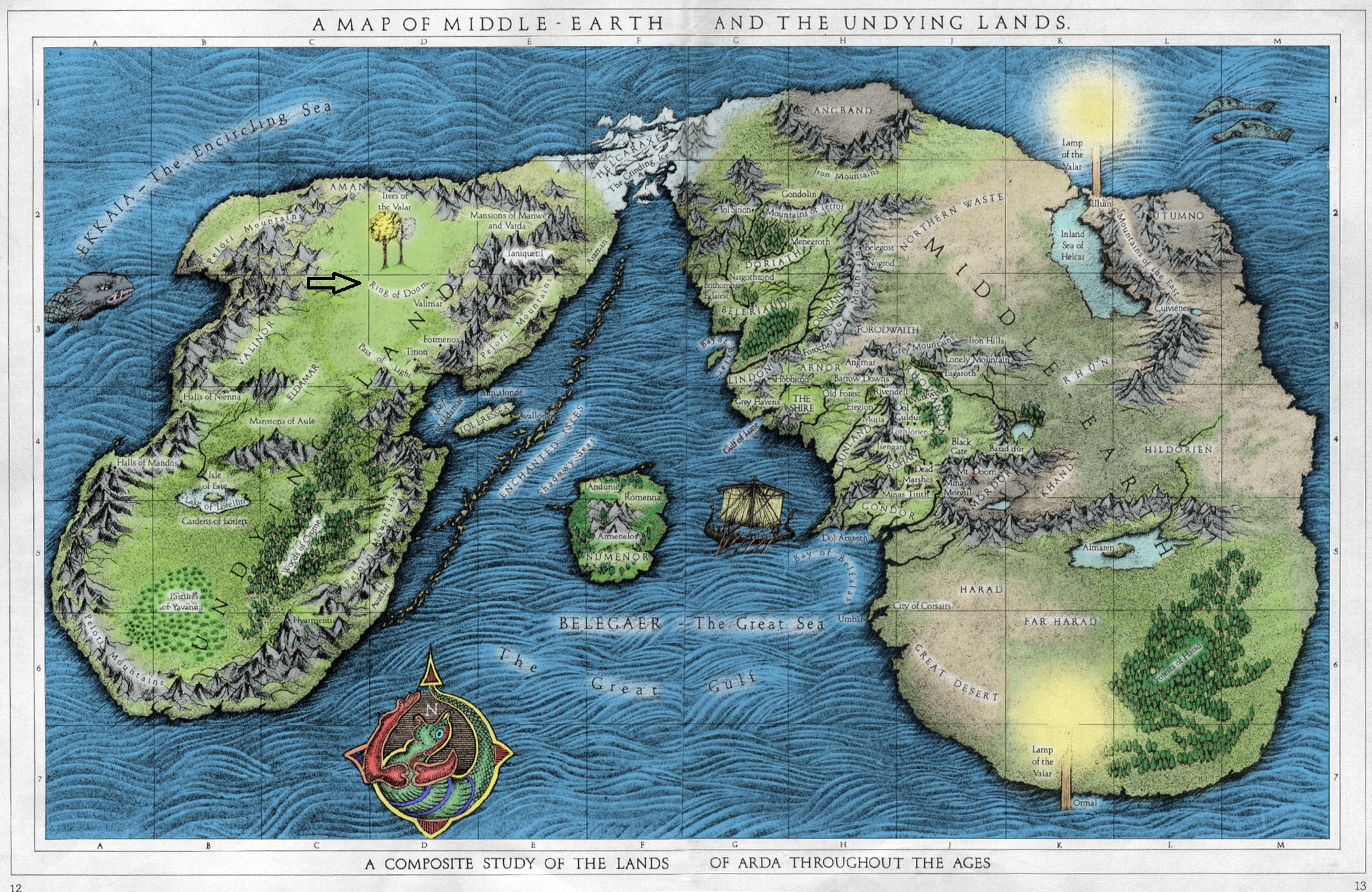(Part 1 continued)
Is the Shire supposed to represent England?
There is no hint that the Shire was in any sense supposed to be the country now called England in an ancient state. On the other hand, there is plainly a very strong resemblance between the Shire and the rural England of about a century ago.
More precisely, the Shire plainly could not be England in any literal sense: England is an island, and even changes in "the shape of all lands" (Fellowship of the Ring) is insufficient to explain such a discrepancy (especially since even the westernmost part of the Shire was some 200 miles from the Sea). Nevertheless, the Shire was more exactly based on England than any other part of Middle-earth was based on any part of our world: the climate, place-names, flora and fauna, terrain, food, customs, and the inhabitants themselves, were all English. In effect the Shire was an idealized version of the rural England of Tolkien's childhood. Some of his comments on the matter were:
[The Shire] is in fact more or less a Warwickshire village of about the period of the Diamond Jubilee ...
Letters, 230 (#178)
But, of course, if we drop the 'fiction' of long ago, 'The Shire' is based on rural England and not any other country in the world... [Later in the same letter he implied that the Shire was "an imaginary mirror" of England.
Letters, 250 (#190)
There is no special reference to England in the 'Shire' -- except of course that as an Englishman brought up in an 'almost rural' village of Warwickshire on the edge of the prosperous bourgeoisie of Birmingham (about the time of the Diamond Jubilee!) I take my models like anyone else -- from such 'life' as I know.
Letters, 235 (#181)
See also Tom Shippeys Road to Middle-earth, pages 31-33 for a fascinating suggestion that certain components of Tolkien's early philological studies may have contributed to his later conception of the Shire. Shippey has also suggested that Tolkien's motivation in changing Gandalf's supper request in chapter 1 of The Hobbit from "cold chicken and tomatoes" in the first edition to "cold chicken and pickles" in the revised edition was linguistic: that to Tolkien's extraordinarily sensitive ear "tomato" sounded out of place in a country that was a mirror of English, since tomato only entered the language in the sixteenth century and moreover originally came from some Caribbean language. Likewise, tobacco, used in The Hobbit, was changed to "pipeweed", and "potatoes" were usually spoken of only by Sam, who called them "taters"
Finally, great care must be taken not to confound the idea of the Shire's having been based on England with a concept found in Tolkien's earliest writings, that Tol Eressea (Elvenhome) eventually became England. This appeared during his early work on the Book of Lost Tales (which eventually evolved into the Silmarillion). Very probably it had been supplanted even before he stopped work on the Lost Tales (1920) (Book of Lost Tales I, pages 22-27). In any case, it had long since been abandoned by the time LoTR was begun in 1937, and plays no part in the 'history' of Middle-earth as presented in The Lord of the Rings, The Silmarillion and The Hobbit.








